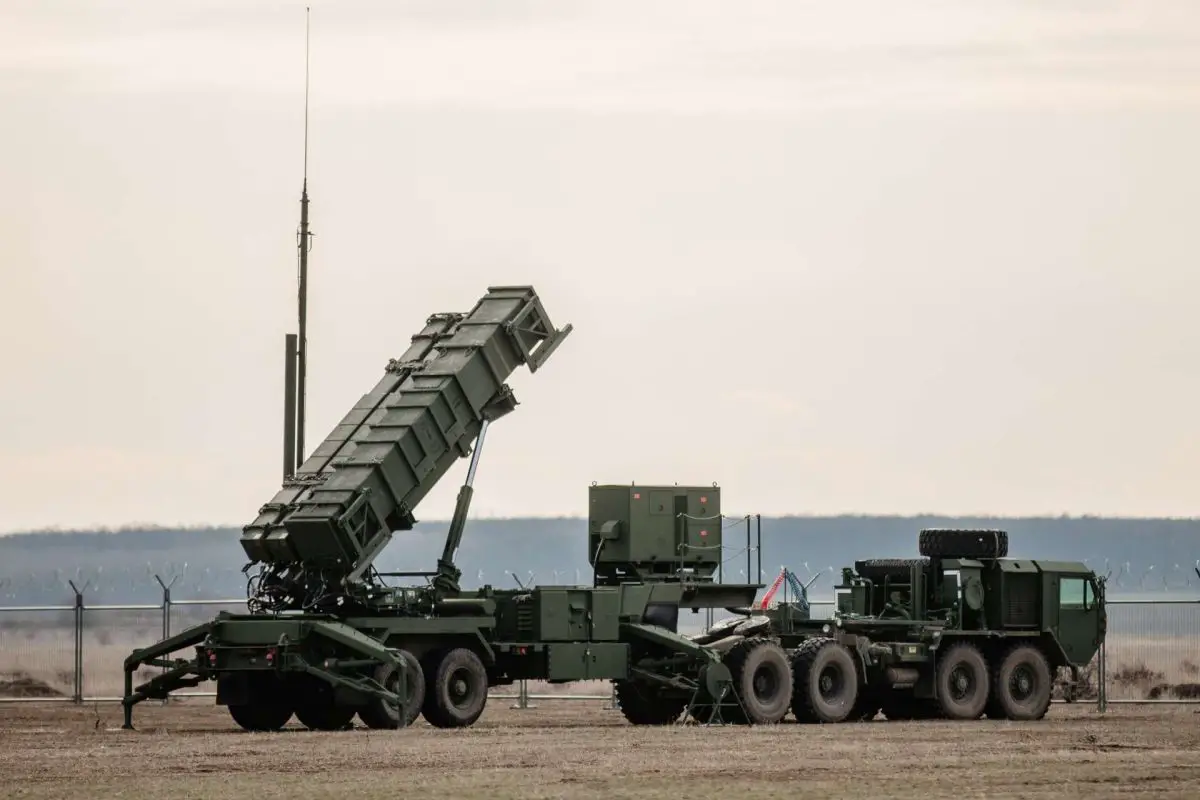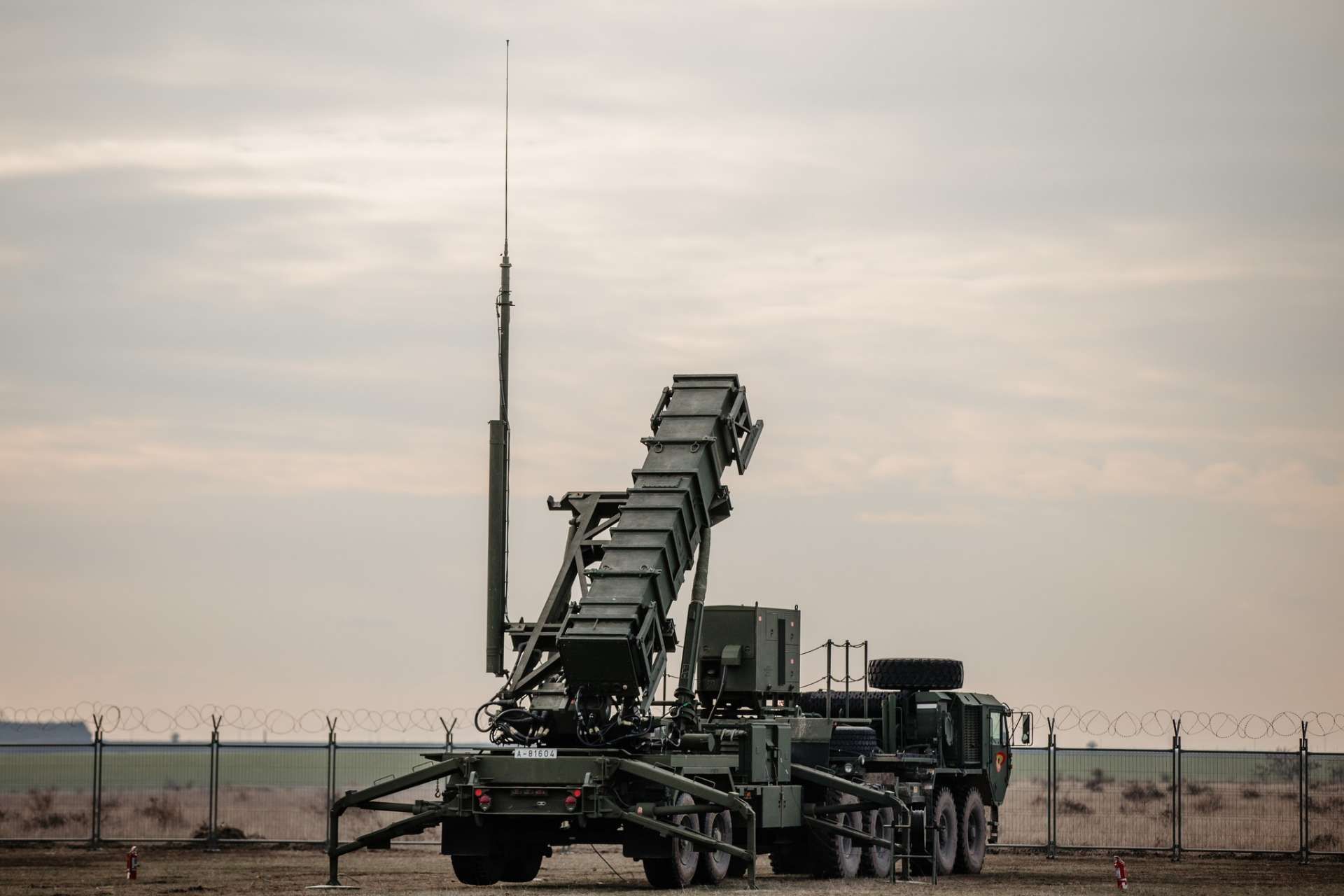Breaking News
Romanian Government approves donation of US Patriot surface-to-air missile system to Ukraine.
On September 2, 2024, the Romanian Government convened to adopt several legislative measures and emergency ordinances focused on national defense capabilities and social protection policies. One of the primary actions taken was the approval of a draft law for a donation deed of a Patriot surface-to-air missile system to Ukraine, in a configuration agreed upon with the United States. This draft law is set to be submitted to the Romanian Parliament for expedited debate and approval under an emergency procedure.
Follow Army Recognition on Google News at this link

Romania's decision to donate one of its Patriot systems to Ukraine is contingent upon ongoing negotiations with allied countries, including the United States, to secure a replacement or equivalent defense system. (Picture source: Romanian Air Force)
The draft law grants the Romanian Government authority to take necessary actions to restore its ground-based air defense capability. This includes entering into state contracts, such as Letters of Offer and Acceptance (LOA) under the U.S. Foreign Military Sales Program (FMS), to acquire a Patriot surface-to-air missile system in the 3+ configuration. The procurement covers major equipment, transport means, materials, parts, maintenance tools, an initial logistics support package, training services, and cryptographic and special regime equipment. The Ministry of National Defense is also authorized to secure the necessary funds to cover fees and commissions related to this defense capability restoration.
Earlier in the year, on June 20, 2024, the Supreme Council of Defense of Romania, chaired by President Klaus Iohannis, decided to donate a Patriot missile defense system to Ukraine. The decision followed an analysis by the Ministry of National Defense regarding the operational status of Romania's four existing Patriot systems and progress in acquiring three additional systems. The deliberations were influenced by the deteriorating security situation in Ukraine, marked by ongoing Russian attacks on civilians and critical infrastructure, particularly in the energy sector. These actions were viewed as having regional security implications, including for Romania, prompting a coordinated response with allied nations.
The decision to donate one of the Patriot systems to Ukraine is contingent upon ongoing negotiations with allied countries, including the United States, to secure a replacement or equivalent defense system. This approach aims to preserve Romania's air defense capabilities while maintaining national security and NATO interoperability. The Supreme Council of Defense's decision was supported by a technical evaluation by Romanian authorities, with measures in place to address potential vulnerabilities arising from this transfer. Romania intends to continue discussions with its allies to reinforce its air defense infrastructure.

In 2017, Romania purchased seven Patriot Configuration 3 units, including radars, control stations, antennas, launchers, and power plants, with a total value of approximately $4 billion. (Picture source: Romanian Air Force)
Romania received its first Patriot surface-to-air missile system in September 2020, and by 2023, four systems had been delivered. This acquisition was part of a 2017 agreement under which Romania purchased seven Patriot Configuration 3 units, including radars, control stations, antennas, launchers, and power plants. The agreement also included 168 Patriot Advanced Capability-3 Missile Segment Enhancement (PAC-3 MSE) missiles and 56 Patriot MIM-104E PAC-2 Guidance Enhanced Missile TBM (GEM-T) missiles, with a total value of approximately $4 billion. An additional three systems are scheduled for deployment with the Romanian Land Forces. To date, the Romanian Air Force's 74th Patriot Regiment is the sole operator of both PAC-2 GEM-T and PAC-3 MSE Patriot missile systems.
The Patriot PAC-2 missile system is a surface-to-air platform designed to intercept aircraft and counter ballistic and cruise missiles. It uses a blast-fragmentation warhead that detonates near its target, causing damage with high-velocity fragments. The PAC-2 system has a maximum range of about 160 kilometers and can engage targets at various altitudes, aided by a radar system that can track and guide multiple missiles simultaneously. The PAC-3 missile system, in contrast, uses hit-to-kill technology, involving direct impact to destroy targets, offering increased precision. This system is optimized for intercepting tactical ballistic and cruise missiles, with each launcher capable of carrying up to 16 PAC-3 interceptors compared to four PAC-2 missiles per launcher. The PAC-3 system features enhancements in speed, maneuverability, and target discrimination due to its more powerful rocket motor and advanced guidance system.


























